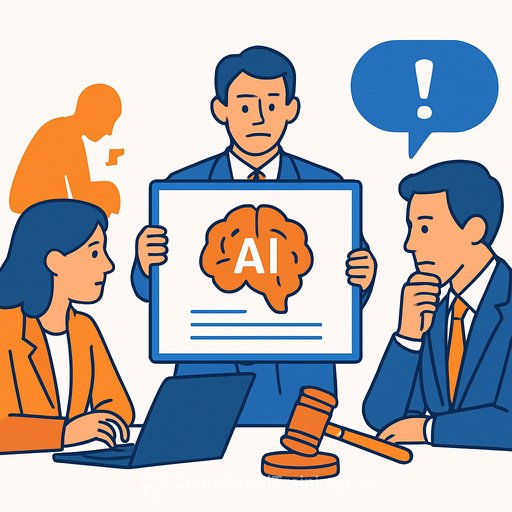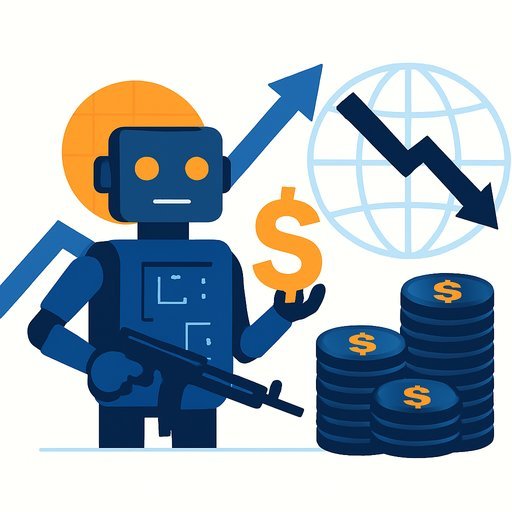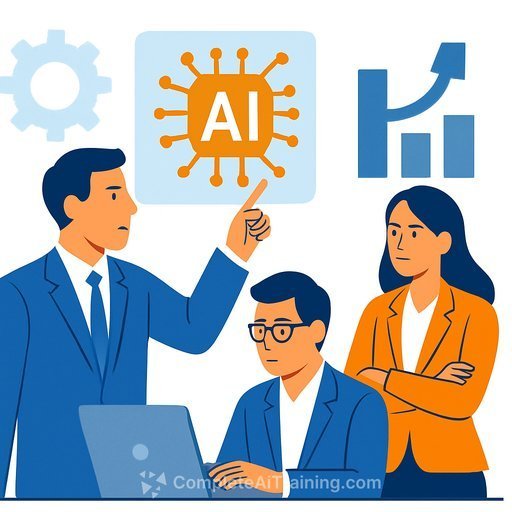Boards Should Have Input On AI Strategies That Risk Employee Displacement
AI is no longer a side project. It's a core lever for efficiency, cost, and competitiveness - with real consequences for people. That's why the line between what the CEO executes and what the board oversees must be crystal clear, especially when AI could displace parts of the workforce.
Headlines tell the story. Challenger, Gray & Christmas has tracked 48,414 announced job cuts explicitly tied to AI, with another 20,219 linked to tech upgrades using AI. Some companies are also moving faster on reskilling mandates and are ending "labor hoarding." The message to leadership: your governance model needs to keep up with the speed of deployment.
Why boards need a say
Boards carry accepted oversight responsibility for human capital. AI deployment now sits squarely in that lane. The National Association of Corporate Directors recommends boards monitor job impact and treat automation risk with scrutiny on par with financial risk - focusing on resilience over short-term cuts.
That means clear thresholds for board involvement, transparent reporting on workforce outcomes, and a stance that AI should augment human capabilities where possible.
The CEO-board split (simple and practical)
- CEO and management: Own AI strategy, vendor selection, delivery, and day-to-day workforce planning. Build the business case, run pilots, measure impact, and execute reskilling.
- Board: Set risk appetite, approve deployment plans that materially affect jobs, oversee human capital strategy, and ensure ethics, compliance, and stakeholder communication are addressed.
Workforce impact goes beyond layoffs
It's not just job cuts. Some employees will face task redesign, new workflows, and mandatory training. Others will be asked to shift roles or exit if they won't reskill. Expect shifts in loyalty norms and a higher bar for internal mobility. Plan for that, or you'll pay for it in engagement, productivity, and brand reputation later.
As Andy Challenger put it, AI is both replacing roles in some industries and making existing teams more efficient in others. Your plan should reflect both realities - and show your math for each function.
What the board should ask before approving AI deployments
- Which tasks are being automated, and where does that translate into role reduction vs. role redesign?
- What is the projected headcount impact by function and geography, quarter by quarter?
- What percent of affected employees can be redeployed, and what are the pathways?
- Is there a funded reskilling plan (budget, time per employee, completion targets, certifications)?
- What productivity, quality, and customer outcomes justify the change? How will they be measured?
- What are the compliance, bias, data privacy, and labor law risks, and who owns mitigation?
- How will investors, employees, and regulators be briefed? What is the narrative and timeline?
Guardrails for responsible AI deployment
- Define a materiality threshold that triggers board review (e.g., any plan impacting more than X% of a function or Y roles).
- Adopt "augment-first" design: automate tasks before eliminating roles - then validate with pilot data.
- Stand up an AI review mechanism that evaluates fairness, compliance, and workforce impact before scale.
- Require transition support: reskilling, redeployment, severance, and outplacement standards.
- Close the loop: measure outcomes versus plan and course-correct fast.
Metrics the board should see each quarter
- AI-driven productivity by function (per-FTE output, cycle time, quality/error rates).
- Headcount impact: reductions, redeployments, external hires, and vacancy backfill avoided.
- Training: budget used, completion rates, skill attainment, time to proficiency, internal mobility.
- Risk: model incidents, bias findings, privacy events, audit results, and remediation timelines.
- People outcomes: engagement, regrettable attrition, manager load, and sentiment from exit interviews.
Communication that reduces blowback
- With employees: what's changing, who's affected, what support exists, and how success is measured.
- With investors: how AI drives resilience and margin without eroding culture or brand.
- With media and regulators: clear rationale, transparent safeguards, and measurable outcomes.
Practical next steps for boards and CEOs
- Agree on a shared AI deployment policy and materiality triggers for board review.
- Map the work: task-level analysis before role-level decisions. Pilot, then scale.
- Fund reskilling like a core project, not a side program. Time-box learning and tie it to real roles.
- Publish a quarterly AI and workforce dashboard to the board, with a simple one-page summary.
- Run a scenario plan: "augment-first," "mixed," and "automation-heavy," with financial and people impacts.
Your membership also unlocks:










